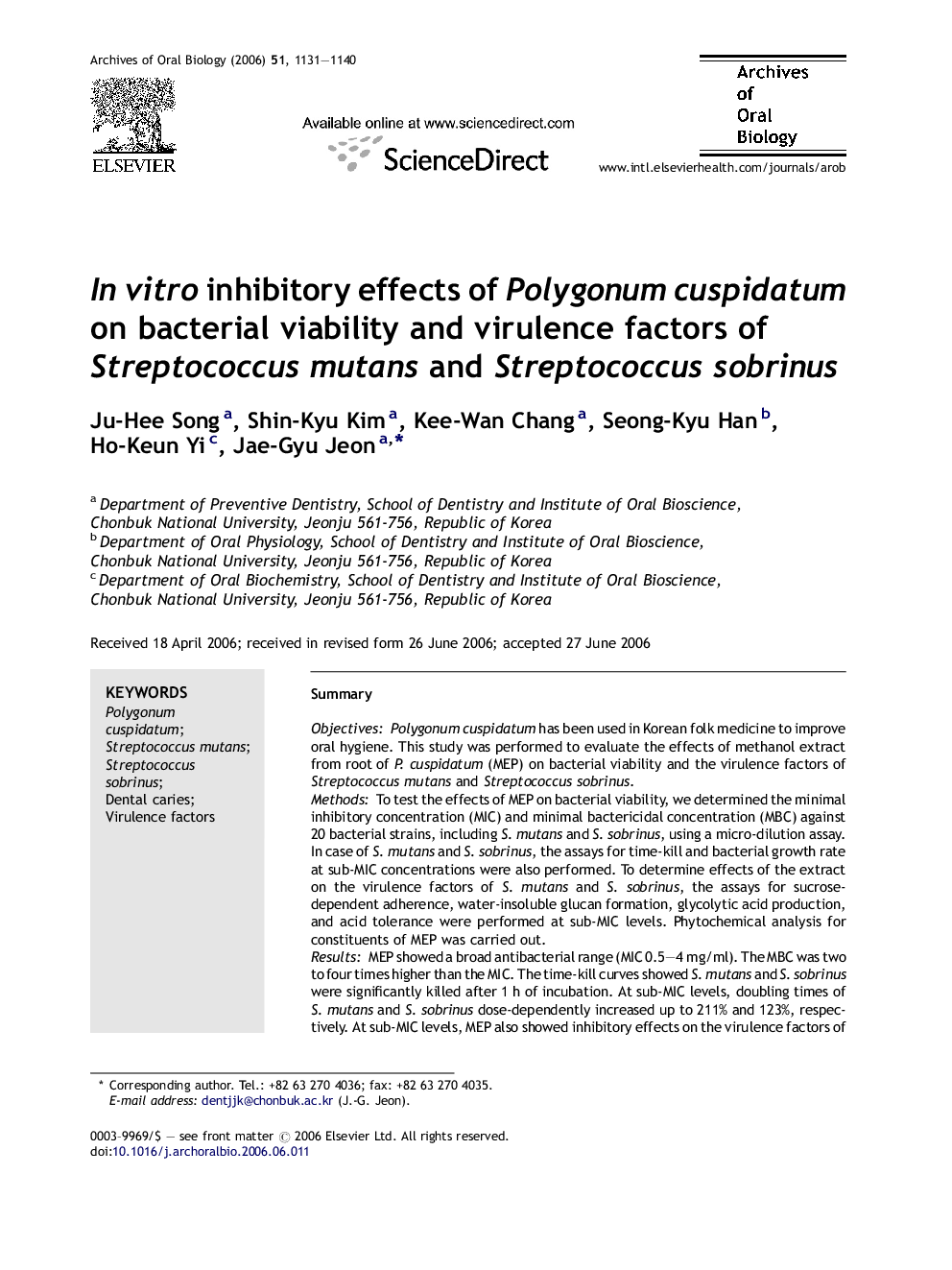| کد مقاله | کد نشریه | سال انتشار | مقاله انگلیسی | نسخه تمام متن |
|---|---|---|---|---|
| 3121616 | 1583403 | 2006 | 10 صفحه PDF | دانلود رایگان |

SummaryObjectivesPolygonum cuspidatum has been used in Korean folk medicine to improve oral hygiene. This study was performed to evaluate the effects of methanol extract from root of P. cuspidatum (MEP) on bacterial viability and the virulence factors of Streptococcus mutans and Streptococcus sobrinus.MethodsTo test the effects of MEP on bacterial viability, we determined the minimal inhibitory concentration (MIC) and minimal bactericidal concentration (MBC) against 20 bacterial strains, including S. mutans and S. sobrinus, using a micro-dilution assay. In case of S. mutans and S. sobrinus, the assays for time-kill and bacterial growth rate at sub-MIC concentrations were also performed. To determine effects of the extract on the virulence factors of S. mutans and S. sobrinus, the assays for sucrose-dependent adherence, water-insoluble glucan formation, glycolytic acid production, and acid tolerance were performed at sub-MIC levels. Phytochemical analysis for constituents of MEP was carried out.ResultsMEP showed a broad antibacterial range (MIC 0.5–4 mg/ml). The MBC was two to four times higher than the MIC. The time-kill curves showed S. mutans and S. sobrinus were significantly killed after 1 h of incubation. At sub-MIC levels, doubling times of S. mutans and S. sobrinus dose-dependently increased up to 211% and 123%, respectively. At sub-MIC levels, MEP also showed inhibitory effects on the virulence factors of S. mutans and S. sobrinus in a dose-dependent fashion. Phytochemical analysis revealed the presence of alkaloids, sterol/terpenes, tannins, flavonoids, and carbohydrates.ConclusionThese data indicate that MEP has inhibitory effects on bacterial viability at higher concentrations (≥MIC) and the virulence factors of S. mutans and S. sobrinus at sub-MIC concentrations, suggesting that it might be useful for the control of dental plaque formation and subsequent dental caries formation.
Journal: Archives of Oral Biology - Volume 51, Issue 12, December 2006, Pages 1131–1140